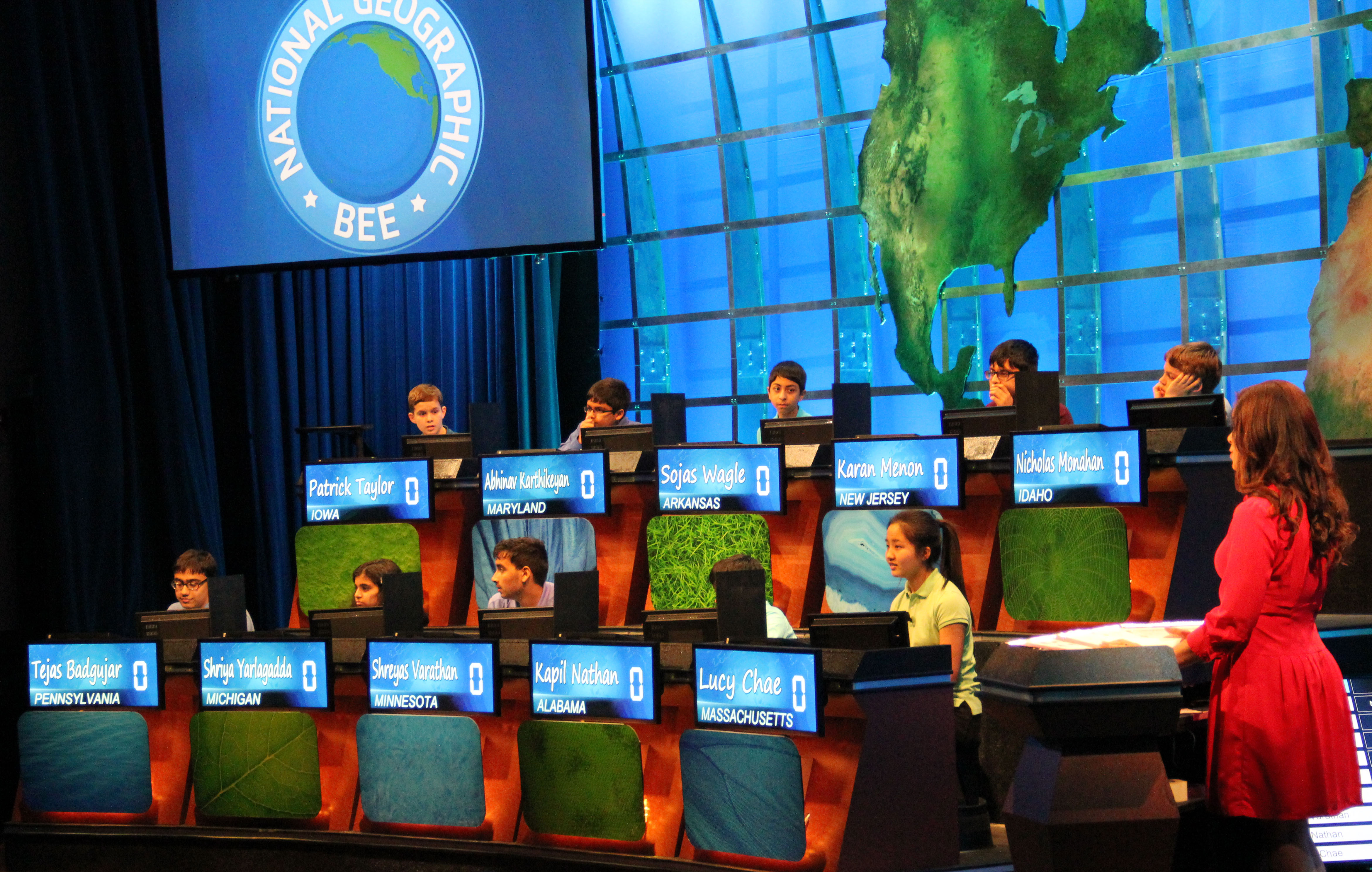WASHINGTON — Knowledge check: How many U.S. states have populations over 15 million? What is the most densely populated country in South America? What’s the term for a strip of land that connects two larger land masses? Name the official currency of Lichtenstein.
That would be four, El Salvador, isthmus and the Swiss franc.
You might have drawn a few blanks, but 10 of the brightest kids in the country breezed through these questions and dozens more at the 27th annual National Geographic Bee finals held Wednesday.
Although the questions were tough, there were more smiles than tears. And in the end it was down to two — Shriya Yarlagadda, from Michigan, and Karan Menon, from New Jersey.
But only one managed to scribble the right answer to a really tough question: “Mariupol, a city located at the mouth of the Kalmius River, is located on what sea that is an arm of the Black Sea?”
Menon wrote “Sea of Azov” on his digital screen. He was right.
Completing the final round with a perfect score, the eighth-grader from Edison took first place, winning a $50,000 college scholarship, a lifetime membership to National Geographic and a trip to the Galapagos. And he’s only 14.
“This is the high of my life,” said Menon. All of his past achievements combined would have to be multiplied by infinity to reach the feeling this win gave him, he said.
But it was a hard win. Menon was nearly ousted during the semifinals, before contesting an earlier answer he’d given that was deemed incorrect. He was asked for the metal-bearing mineral in the Mesabi Range in Minnesota. The answer the judges wanted was iron ore, but he argued that his answer — taconite — was correct because it is a type of iron ore.
After a few grueling moments, the judges ruled in his favor.
“The questions were really challenging. Some of them I’d studied, but for some of them I had to take a risk,” Menon said. “I just had to go with my gut and say an answer.”
Coming in second, Yarlagadda earned a $25,000 scholarship. “It feels great,” she said, to know that her hard work paid off. The 11-year-old sixth-grader from Grand Blancsaid that studying is part of her daily routine. “I gather various facts and I put them together into my fact files, and study those,” she said.
Yarlagadda said her only disappointment is that she can’t come back next year because prize winners aren’t eligible for future competitions. She was one of only six girls to make it to nationals this year.
Students from all 50 states, as well as the Atlantic and Pacific territories and theDepartment of Defense, competed in a preliminary competition held Monday. Four million students from 11,000 schools participated in the 2015 bee at the local and state levels, according to National Geographic CEO Gary Knell.
The 2015 National Geographic Bee is set to air on the National Geographic Channelon Friday.
Feel like testing yourself before sitting down to watch? National Geographic offers adaily quiz that will show you where you stack up.


